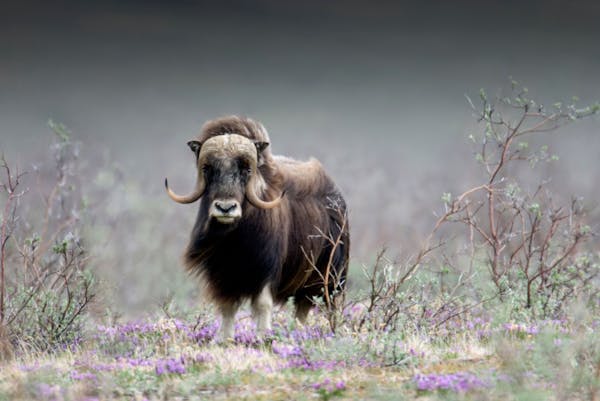How reindeer have adapted to survive and shape the Arctic Tundra
- Nature Conservation
- Land Conservation
- Iconic Species
- Wildlife
- Mammals
- Palearctic Tundra
- Subarctic Eurasia Realm
One Earth’s “Species of the Week” series highlights an iconic species that represents the unique biogeography of each of the 185 bioregions of the Earth.
In Western folklore, reindeer magically pull Santa Claus’ sleigh, flying around the world delivering presents for children to open on Christmas morning.
Yet, this iconic species plays an even more significant role in our shared ecosystem. They are the largest, most numerous herbivores in circumpolar areas, making their grazing essential for a healthy landscape in a region warming four times faster than the rest of the planet.
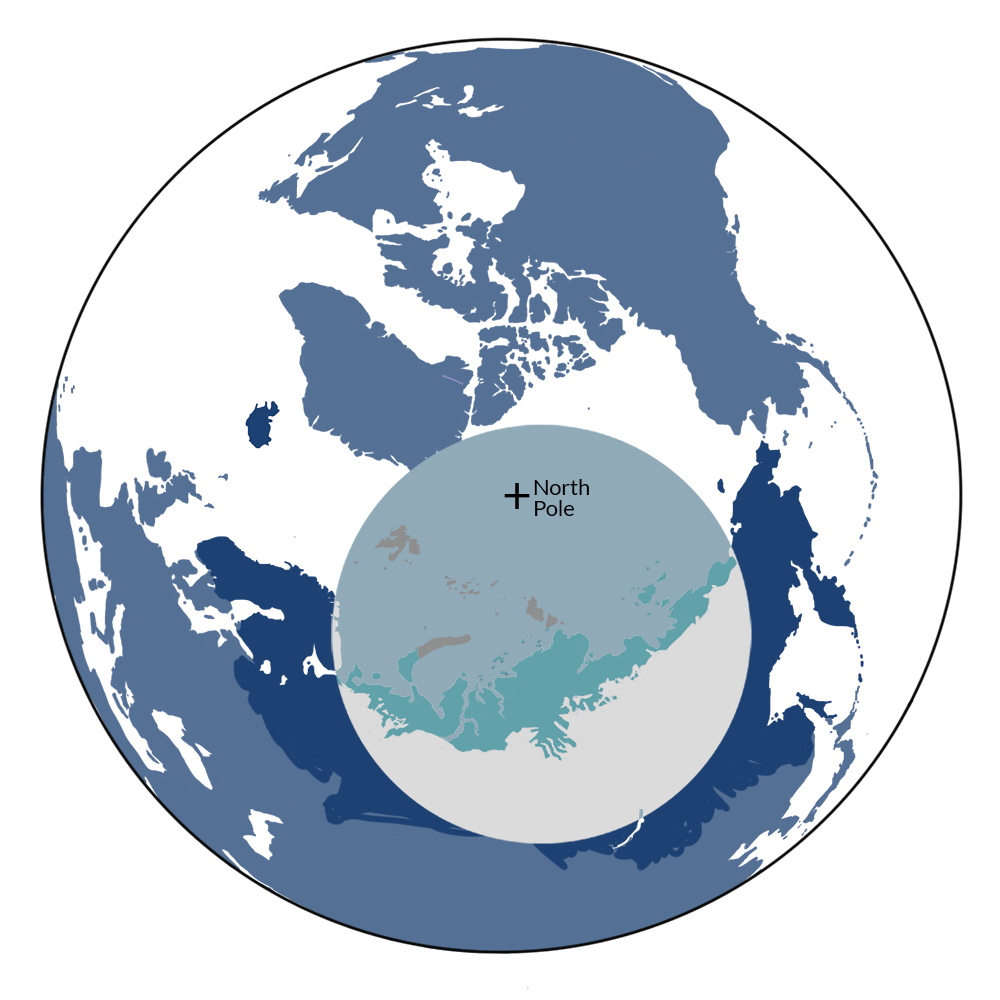
Reindeer are the iconic species of the Greater Eurasian Tundra bioregion (PA4), located in the Palearctic Tundra subrealm of Subarctic Eurasia.
Caribou and reindeer are the same species
Reindeer are native to Northern Europe, Siberia, and North America in the Arctic, subarctic, tundra, boreal, and mountainous regions. They are the same species as caribou, Rangifer tarandus. In North America, they are called caribou if they are wild and reindeer if they are domesticated. In Europe, they are simply called reindeer.
Physical traits and characteristics
Female reindeer, or cows, can measure up to 1.6 to 2 meters (5-6.6 ft) and weigh up to 120 kg (260 lb). Males, or bulls, are slightly larger with a body length of 1.8 to 2.1 meters (5.9-6.9 ft) and can weigh between 159–182 kg (351–401 lb).
The heaviest bulls weigh as much as 318 kg (701 lb). However, weight can vary dramatically between seasons, with males losing as much as 40% of their summer size in the winter months.
Both males and females grow large, velvet antlers.
The most distinct feature of reindeer is their antlers. Reindeer are the only species in the cervid, or deer, family where both males and females grow antlers. In March or April, males begin, and in May or June, the females follow. As the antlers grow, they are covered in thick velvet, filled with blood vessels.
Bulls begin to shed their antlers early to midwinter, while female reindeer keep theirs and acquire the highest ranks in the feeding hierarchy with them ― making all the reindeer pulling Santa’s sleigh female.
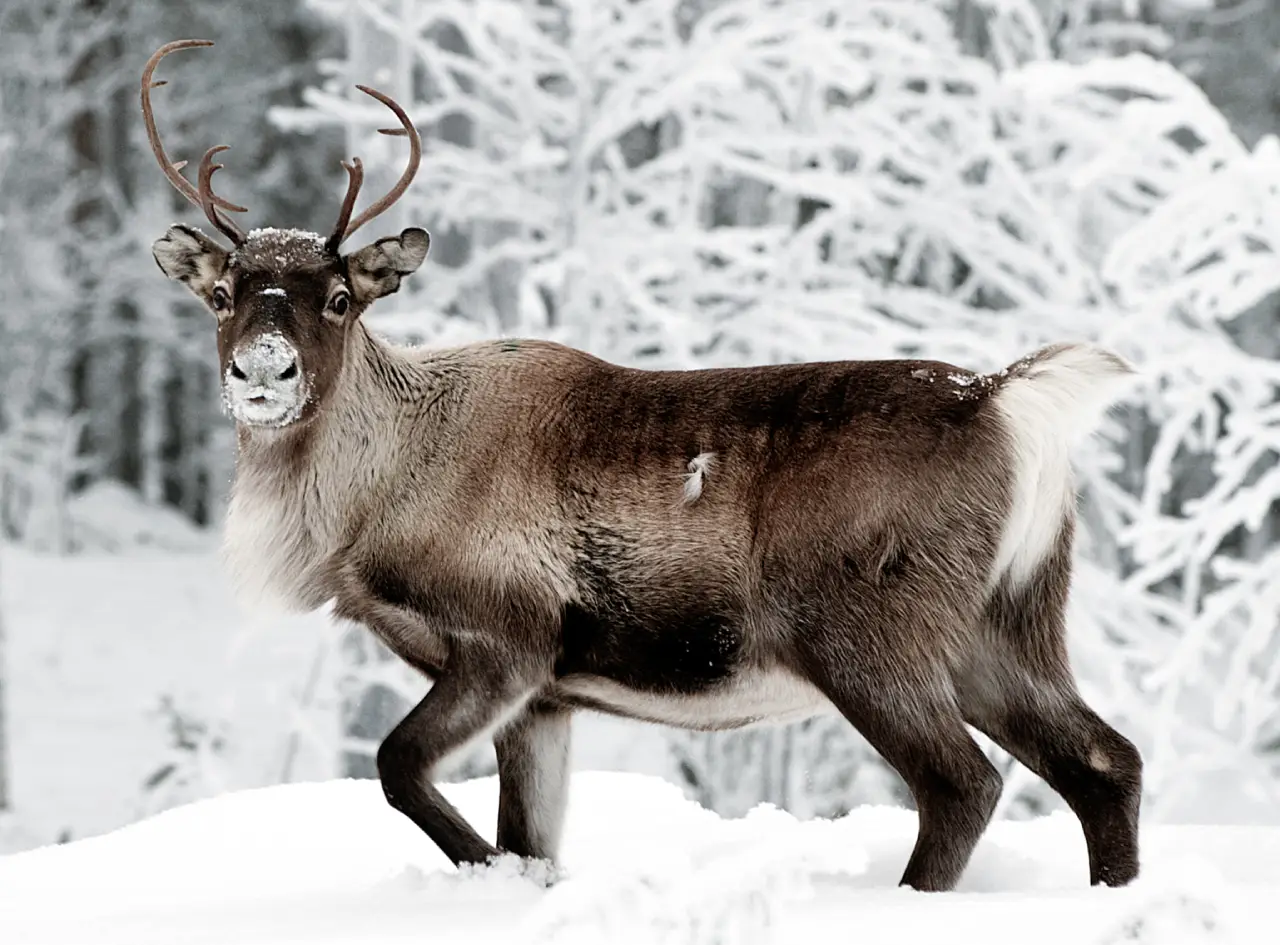
A reindeer in the Arctic snow. Image Credit: Moori, Dreamstime.
Changing eye color to match the season
Another characteristic of reindeer is their changing eye color. A study by the University College London in 2011 revealed that reindeer could see light within the ultraviolet range. This ability helps them survive in the Arctic as many objects blend into the white, snowy landscape. It also improves their vision during continuous darkness and helps spot predators. Reindeer have gold eyes in summer and blue in winter.
Ecosystem engineers of the tundra
With a four-chambered stomach to digest the most challenging and coldest materials, a reindeer’s diet can consist of lichen, leaves, grasses, mushrooms, and even small rodents, fish, and bird eggs when nutritionally starved.
Their mass amounts of grazing help keep plant species healthy, which provides more food and shelter to the biodiversity in their ecosystem. As they trample the ground and spread seeds through their droppings, reindeer increase nitrogen in the soil and slow the encroachment of shrubs. All of this helps keep the tundra pristine.
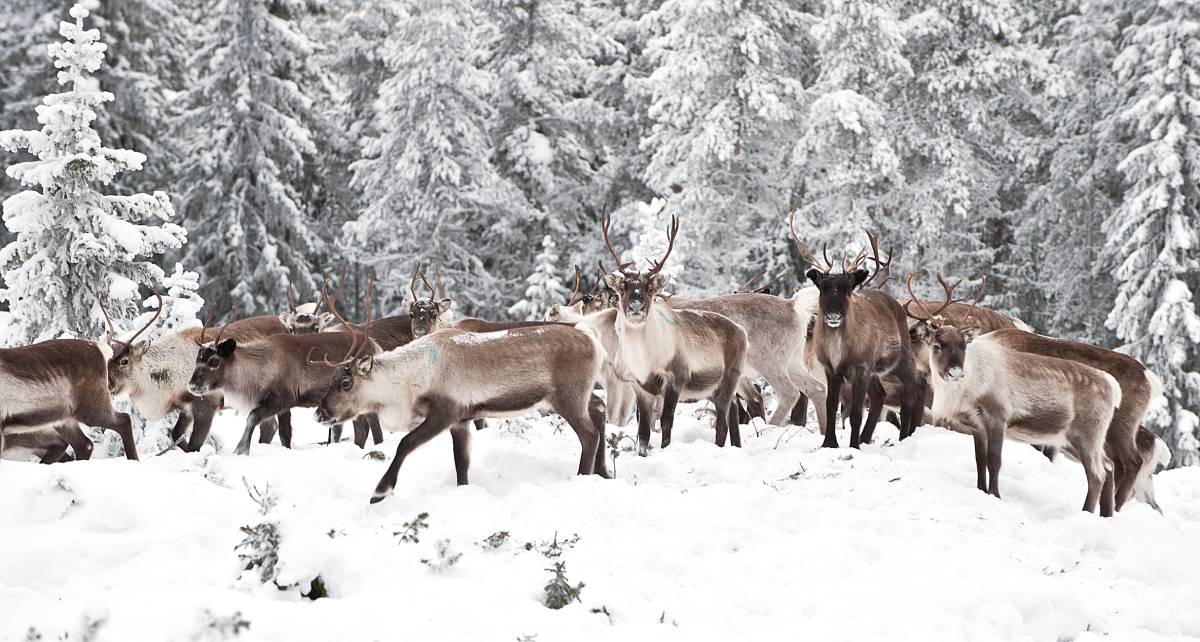
Reindeer live in herds to survive the harsh winter climate together. Image Credit: Moori, Dreamstime.
The power of herding and migration
Most reindeer are highly social and exhibit herding behavior. These herds can range from a few individuals to several hundred thousand. Benefits of herding include increased vigilance against predators, enhanced foraging efficiency, and better access to mates during the breeding season.
The migration patterns of these herds cover distances of 19 to 55 kilometers (12 to 34 miles) per day. Migration allows reindeer to adapt to environmental conditions, following the availability of vegetation and avoiding the harshness of winter landscapes.
Sacred to the Indigenous Peoples of the Arctic
Reindeer hold profound significance in Indigenous cultures. The Inuit of the Kivalliq Region in northern Canada, the Caribou Clan in the Yukon, the Iñupiat, the Inuvialuit, the Hän, the Northern Tutchone, and the Gwichʼin all rely on reindeer for food, clothing, and shelter.
In Finland’s Arctic region, reindeer are a cornerstone of the cultural identity of the Inari Sámi. Here, reindeer herding is a way of life, deeply intertwined with their time-honored practices, reflecting an interwoven relationship with nature.
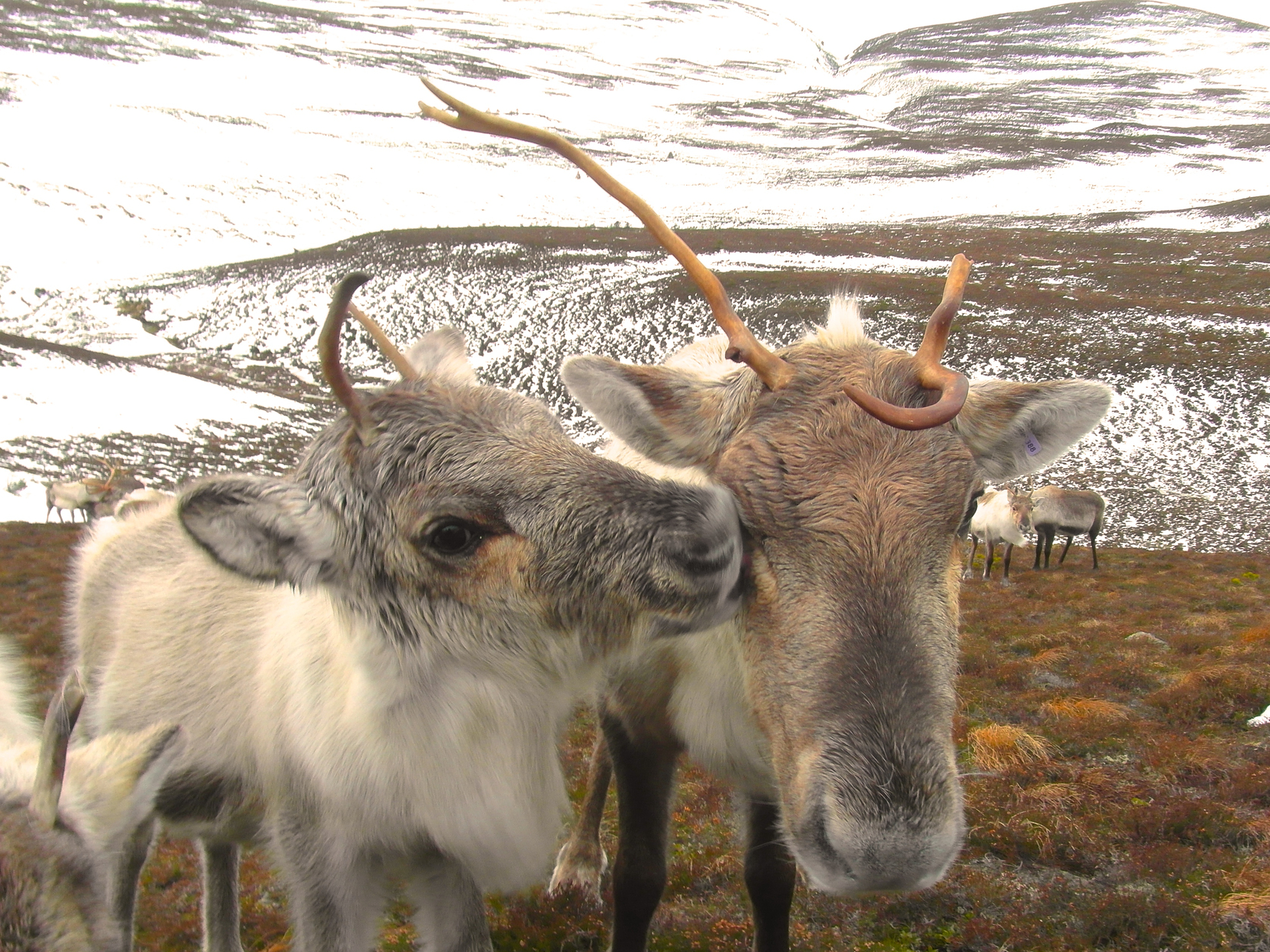
Reindeer cow and calf cuddling up in the Cairngorm Mountains, Scotland. Image Credit: Andi Probert, Dreamstime.
Preserving the species and traditional wisdom
The unique knowledge held by Indigenous communities about reindeer behavior, migration, and the surrounding ecosystem that guides their herding practices offers valuable insights for sustainable Arctic conservation efforts.
This invaluable knowledge also emphasizes the importance of preserving traditional wisdom. As threats from industries like logging and mining loom, recognizing the cultural, ecological, and economic significance of reindeer becomes crucial for the survival and resilience of Indigenous cultures.
Reindeer conservation as a climate solution
The conservation of reindeer emerges as a cultural imperative for Indigenous communities and a crucial climate solution for the broader global ecosystem. Their grazing habits help maintain the Arctic tundra ecosystem, preventing the release of stored carbon in the permafrost. Additionally, their presence promotes biodiversity, contributing to a resilient and balanced environment that can better withstand climate change impacts.
Lastly, Indigenous communities’ traditional reindeer herding practices offer sustainable alternatives to more environmentally harmful land-use practices, fostering a harmonious coexistence between human activities and the fragile Arctic ecosystem. Beyond their enchanting role in folklore, reindeer stand as vital stewards of the North in a rapidly changing world.
Support Nature Conservation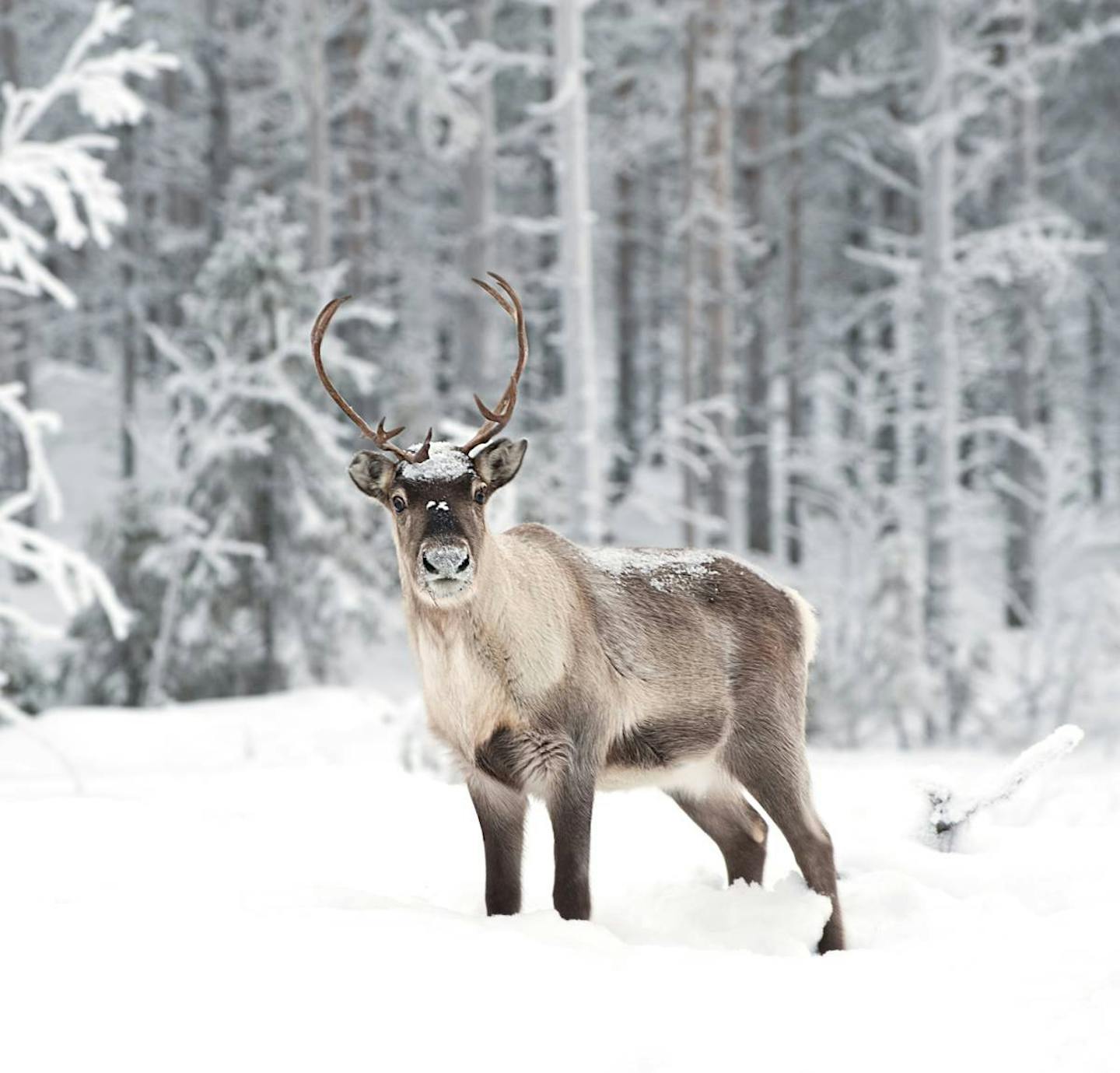

.jpg?auto=compress%2Cformat&h=600&w=600)
